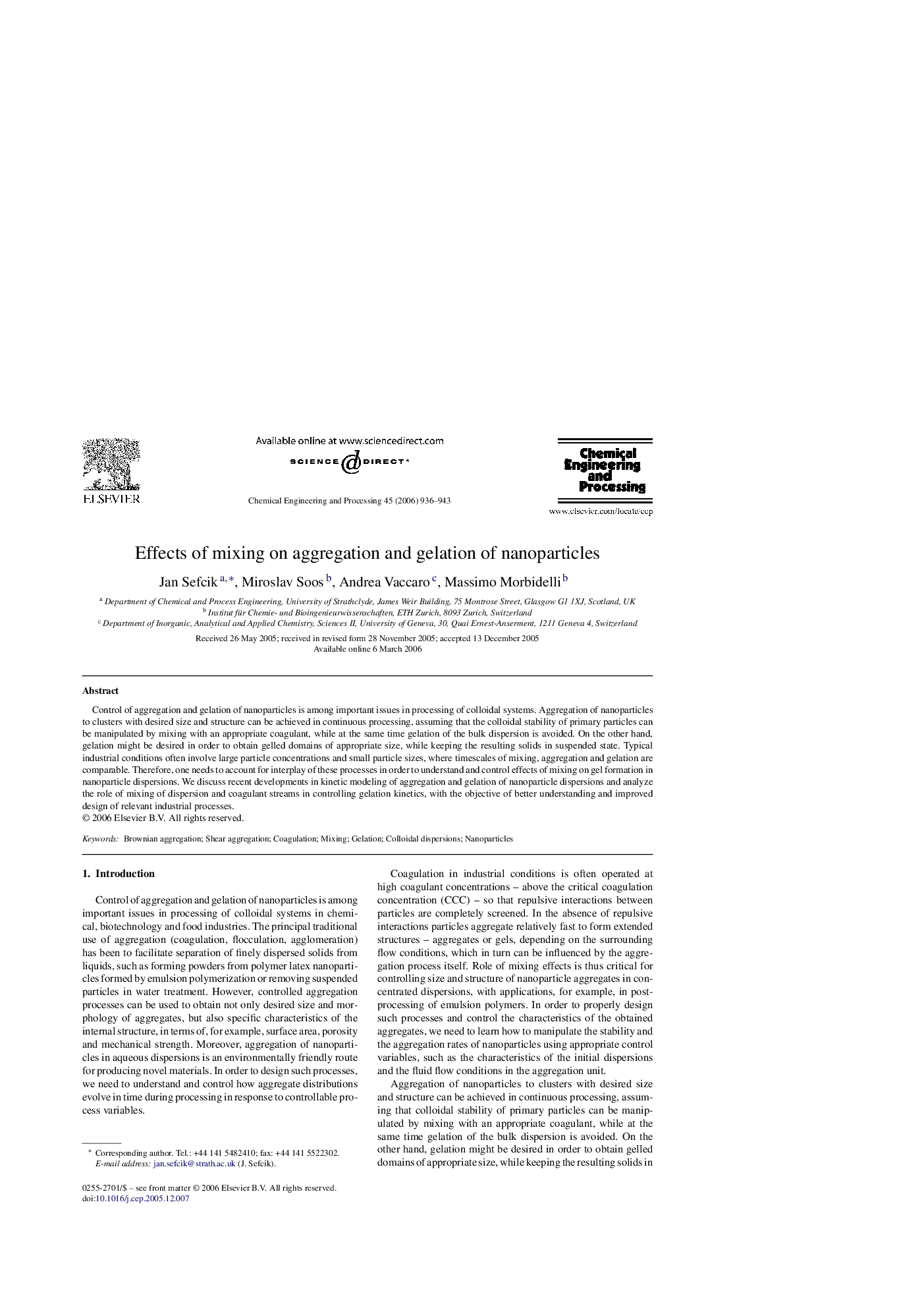| Article ID | Journal | Published Year | Pages | File Type |
|---|---|---|---|---|
| 688572 | Chemical Engineering and Processing: Process Intensification | 2006 | 8 Pages |
Control of aggregation and gelation of nanoparticles is among important issues in processing of colloidal systems. Aggregation of nanoparticles to clusters with desired size and structure can be achieved in continuous processing, assuming that the colloidal stability of primary particles can be manipulated by mixing with an appropriate coagulant, while at the same time gelation of the bulk dispersion is avoided. On the other hand, gelation might be desired in order to obtain gelled domains of appropriate size, while keeping the resulting solids in suspended state. Typical industrial conditions often involve large particle concentrations and small particle sizes, where timescales of mixing, aggregation and gelation are comparable. Therefore, one needs to account for interplay of these processes in order to understand and control effects of mixing on gel formation in nanoparticle dispersions. We discuss recent developments in kinetic modeling of aggregation and gelation of nanoparticle dispersions and analyze the role of mixing of dispersion and coagulant streams in controlling gelation kinetics, with the objective of better understanding and improved design of relevant industrial processes.
